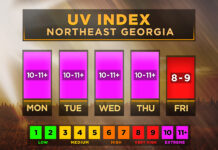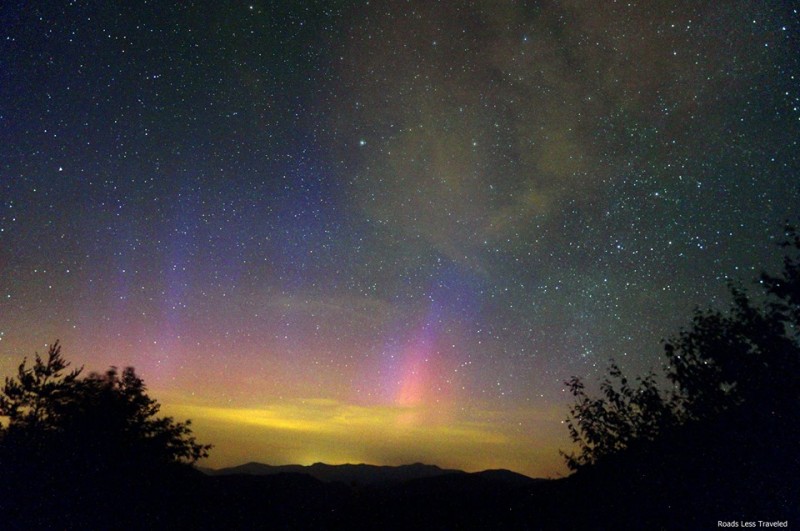
For the first time since May there is a chance to see the northern lights over the North Georgia mountains.
Strong Flare Tuesday
The sun unleashed a strong X1.8 flare on Tuesday evening while sunspot AR3848 was directly facing Earth. This flare is the latest (but not strongest) in a series of strong flares during the past few weeks. You can see it in the animation below.
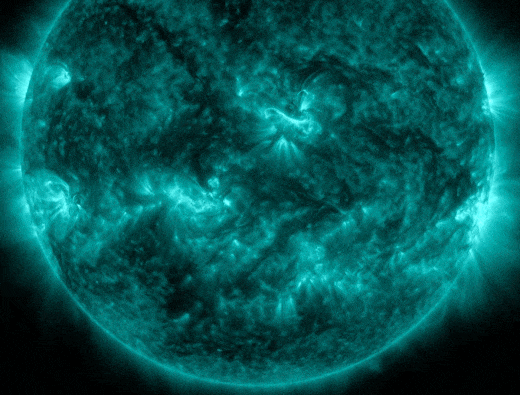
Despite not being the strongest flare we have seen lately, it will have the best effects on Earth. This is because it wasn’t what we call “impulsive.” Impulsive flares are very quick and don’t often lift much plasma out of the sun’s atmosphere.
Tuesday’s flare lasted well over an hour, with the strongest part lasting about 49 minutes. This was plenty of time to lift a large “Coronal Mass Ejection,” or CME, out of the sun.
Plasma Cloud headed for Earth
You can see in the animation below from NASA what the CME looks like. It appears as a large “puff” of plasma moving away from the sun. Importantly, it appears in all directions, forming a full halo, which means it is headed straight for Earth.
What is that giant white thing, you say? That is a photobombing Comet Tsuchinshan-ATLAS passing between us and the sun. It is extremely bright and saturates the camera, making it appear as a bright streak.
The comet will likely also get hit by the CME, which may break up its tail and result in some cool images when it appears in the evening sky this weekend.
All the white dots are protons that are released from the flare, travel at near the speed of light, and impact the camera.
RELATED: Comet Tsuchinshan-ATLAS to be visible mid-month!
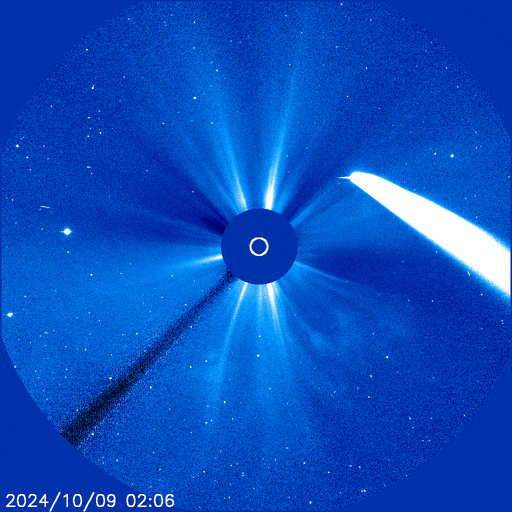
This means there is a decent chance for us to see Aurora if things line up just right. It is very important to remember that solar storms are fickle and very difficult to predict.
The latest forecast from NASA calls for a KP maximum of 8 on Thursday into Friday night. The KP, or planetary index, is just a measure of how strong solar storms are. For reference, the storm back in May brought Aurora nearly overhead, reaching a KP of 9, which is the highest scale.
The image below shows the expected range of overhead aurora.
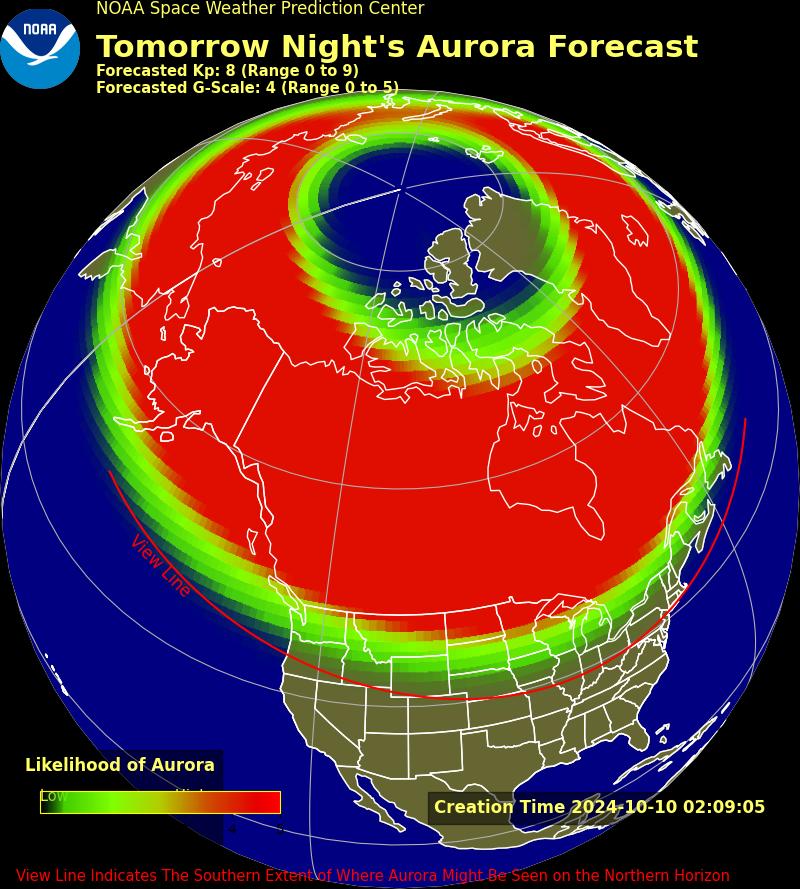
While the bulk is still over Canada, a KP of 8 will often result in aurora visible on the northern horizon from North Georgia.
When and where to look
While it is impossible to know exactly when the strongest part of the storm will arrive or if it will cause aurora this far south, you can do a couple of things to increase your chances.
First, I recommend bookmarking both www.spaceweatherlive.com and www.spaceweather.com. If you like, SpaceweatherLive has an app that I highly recommend as well. There, you can sign up for alerts to know when storms are happening. This is by far the easiest way to tell when things are happening.
Watch for at least a G3 storm, preferably G4, then head out to a spot with a good northern horizon and limited light pollution.
Aurora this far south are almost always dim. Give your eyes time to adjust then look for a white or red glow on the horizon. With a little luck they will creep high enough to be seen over any nearby trees as well.
A cell phone can help bring out any detail in the aurora on the horizon. Even a short exposure with a modern smartphone can do a surprisingly good job, as long as you can keep it still. A DSLR camera with a long exposure will do even better.
Keep an eye on the Now Habersham Facebook page as well. If things look good for Aurora on the evening of Oct. 10, I will post an update.
Keep your fingers crossed, and keep lookin’ up!





